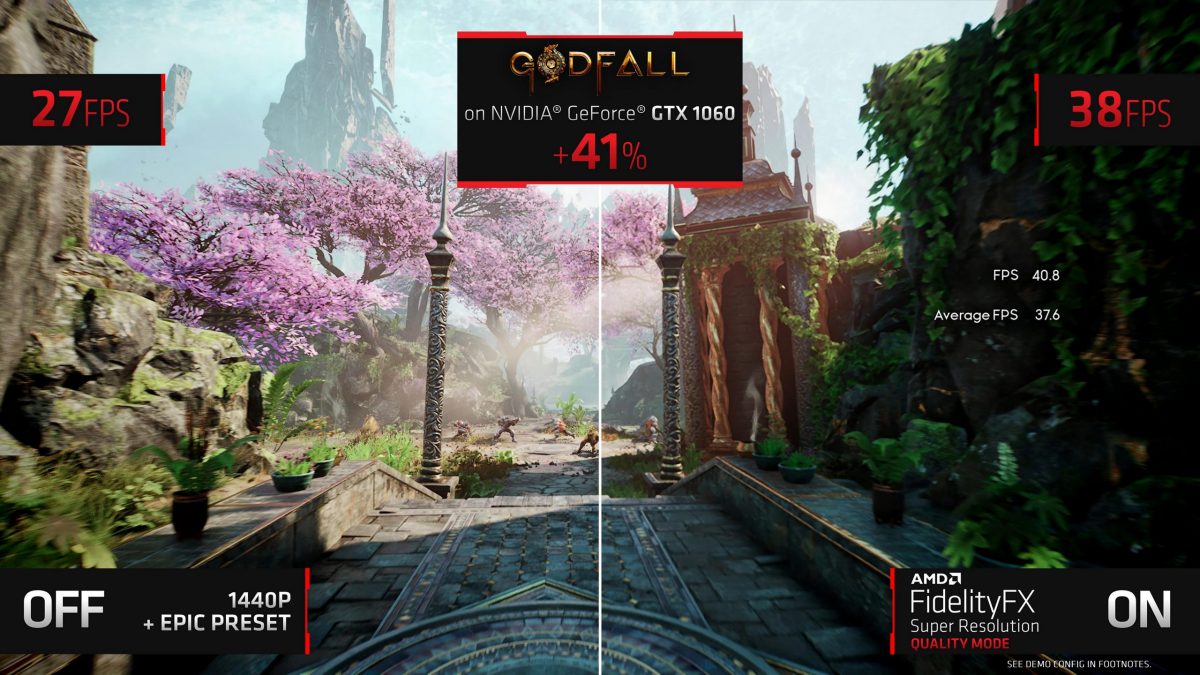During the Computex 2021, AMD came under the spotlight when Scott Herkelman announced AMD’s alternative to NVIDIA’s DLSS, a resolution upscaling algorithm named AMD FSR. The technology is not based on artificial intelligence or machine learning but instead uses a spatial upscaling technique. Unlike other super-resolution algorithms, the FSR upscaling is not independent of motion vectors or history buffers. This means that a performance boost with Tensors alike is not necessary for the technology to work.
Not only the latest GPUs but the previous-gen GPUs based on older architectures, such as AMD’s Polaris or NVIDIA Pascal, will also be able to utilize AMD FSR. Since this is a cross-platform technology, it is supported by DirectX12, DirectX11, and Vulkan APIs and is compatible with Intel GPUs too.
While responding to Kyle Bennett on Twitter, Raja Kadori confirmed that Intel is considering including FSR in the upcoming Xe-HPG based GPUs, which are next-generation DG2 discrete gaming GPUs. Kadori also stated that Intel will try to align with open approaches, which AMD FSR certainly will be as it will be released under MIT license.
Until now, NVIDIA has not commented on AMD’s new technology and it is understandable as the official reveal is scheduled for June 22. AMD has not confirmed the supported games; however, Godfall is an exception.
AMD also demonstrated the popular steam card, RTX 1060 Ti running with the FSR technology. Fans are now busy comparing the quality difference.
Via Twitter




